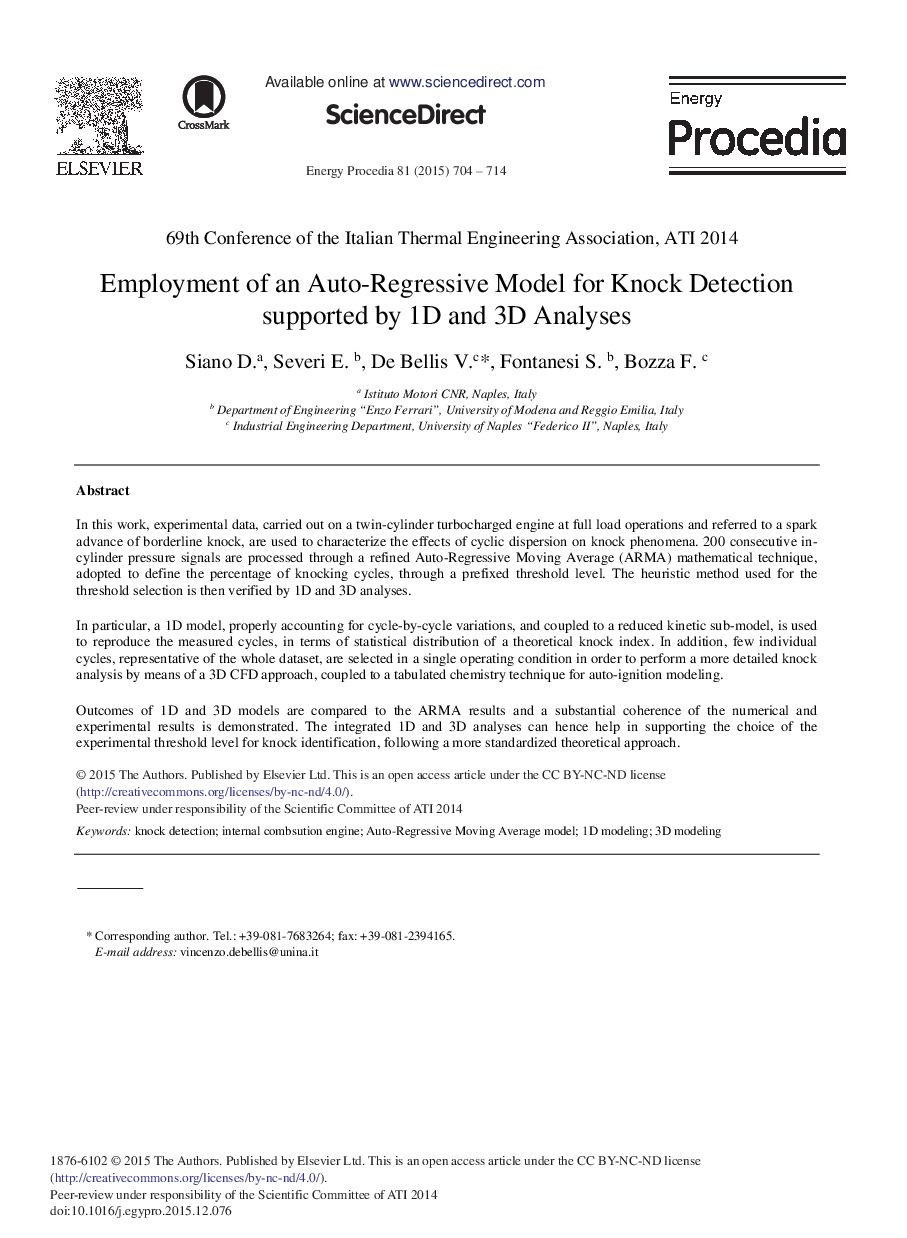| Article ID | Journal | Published Year | Pages | File Type |
|---|---|---|---|---|
| 1509295 | Energy Procedia | 2015 | 11 Pages |
In this work, experimental data, carried out on a twin-cylinder turbocharged engine at full load operations and referred to a spark advance of borderline knock, are used to characterize the effects of cyclic dispersion on knock phenomena. 200 consecutive in-cylinder pressure signals are processed through a refined Auto-Regressive Moving Average (ARMA) mathematical technique, adopted to define the percentage of knocking cycles, through a prefixed threshold level. The heuristic method used for the threshold selection is then verified by 1D and 3D analyses.In particular, a 1D model, properly accounting for cycle-by-cycle variations, and coupled to a reduced kinetic sub-model, is used to reproduce the measured cycles, in terms of statistical distribution of a theoretical knock index. In addition, few individual cycles, representative of the whole dataset, are selected in a single operating condition in order to perform a more detailed knock analysis by means of a 3D CFD approach, coupled to a tabulated chemistry technique for auto-ignition modeling.Outcomes of 1D and 3D models are compared to the ARMA results and a substantial coherence of the numerical and experimental results is demonstrated. The integrated 1D and 3D analyses can hence help in supporting the choice of the experimental threshold level for knock identification, following a more standardized theoretical approach.
